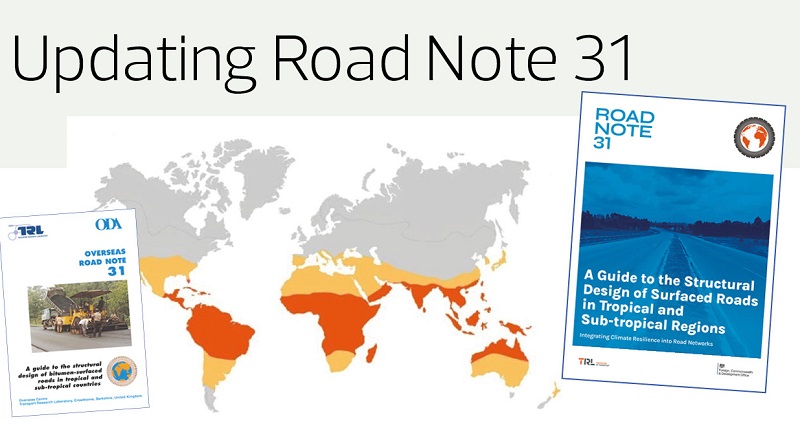Updating RN 31 involved both revision of existing content and the addition of new elements. Deciding what to revise and what to add required interacting with many stakeholders to gather their view and prioritise what they wanted covered in the update. Inevitably these viewpoints and ambitions were not always unanimous, so my role was to bring them into alignment and keep them focussed on achieving the best possible solution for the ultimate user groups.
Listening to the stakeholders was vital though. At the end of the day they were instrumental in getting the 5th Edition of RN 31 just right. They helped in identifying the gaps that needed to be addressed in the updates. They also reviewed the drafts of the document and provided useful comments. RN 31 is a weighty tome, so every review took time and patience and their commitment was invaluable. Their feedback ultimately makes the manual fit-for-purpose.
One element that everyone involved in the update is very proud of is the research behind the changes. I can honestly say that RN 31 is backed by proven empirical research on pavement performance gathered over several years, in various conditions. These were then analysed using mechanistic methods to verify and increase the applicability of the research. Pavement performance data was obtained from many tropical and sub-tropical countries: Mozambique, Brazil, Zambia, Uganda, Vietnam, Mexico, and others. Two new major areas of concern have been addressed in this new edition: the climate resilience of pavements, and the rise in the use of supersingle truck tyres and the damage they cause to pavements. Both of these are current issues affecting Low and Middle Income Countries (LMIC) that were not adequately addressed in the previous edition of RN 31.
Some content was hotly debated. For example, the incorporation, or not, of some old technologies that although are quite cumbersome, are more affordable to LMICs. It was essential to recognise that LMICs can leapfrog some of these technologies and go straight to more advanced technologies within a few years. One such debate involved the use of a device called the Dehlen meter. Eventually a decision was taken to include this particular device: it’s a technology that offers real benefits to LMICs.
The team from TRL involved in authoring the 5th Edition are very pleased with the result and confident of its application. RN 31 is available for the first time as a fully digital resource and it comes with many useful spreadsheet tools to improve both the design and decision making processes. Some online tools are new, but some tools that were developed years back by TRL are still equally useful. For example, the UK DCP 3.1 free software.
RN 31 was first published by TRL (or the Road Research Laboratory as it was back in 1962 when it was a government agency). TRL continues to work beyond the United Kingdom delivering our mission (which has not changed in 90 years) to make transport better. At the moment we are actively supporting road infrastructure initiatives in India, Bangladesh, Mozambique, Kenya, to name a few. We are grateful to FCDO and HVT for financing this update which greatly aids with knowledge transfer.
For me personally, it has been a fulfilling professional journey over 3 years to lead the project management for the revision of RN 31. The highlight came right at the end when I received the draft printed copy to approve prior to committing to publication. Looking at the copy triggered flashbacks of all the discussions at all times of day (and night) with authors, reviewers, stakeholders, project management unit, project advisory group etc. I’m looking forward now to a return to a more balanced working week.
***
About Andrew Otto
Practice Lead of the International Pavement Engineering team at TRL
 Andrew is a chartered engineer with extensive experience in the field of civil engineering, materials, pavements and research. He has worked extensively in Uganda and Kenya. Andrew is author or co-author of a number of manuals such as geometric design, pavement design, rehabilitation design, and low volume roads. Andrew is experienced in experiment design, developing monitoring and data collection strategies for various research projects, conducting performance surveys (failure and success diagnosis) of both paved and unpaved roads, and analysis of a wide range of data for constructed sections.
Andrew is a chartered engineer with extensive experience in the field of civil engineering, materials, pavements and research. He has worked extensively in Uganda and Kenya. Andrew is author or co-author of a number of manuals such as geometric design, pavement design, rehabilitation design, and low volume roads. Andrew is experienced in experiment design, developing monitoring and data collection strategies for various research projects, conducting performance surveys (failure and success diagnosis) of both paved and unpaved roads, and analysis of a wide range of data for constructed sections.

